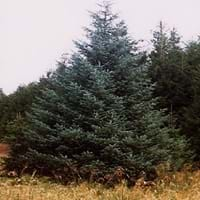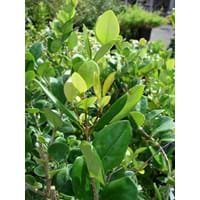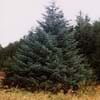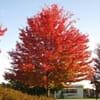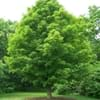Life Span
Perennial
Annual
Type
Tree
Broadleaf Evergreen
Origin
Eastern Asia
Eastern Asia
Types
Black Spruce, Norway Spruce, Colorodo Spruce
Not Available
Number of Varieties
Not Available
Habitat
By seashore, Humid climates, Temperate Regions
foothill woods, Hills, Lowland
USDA Hardiness Zone
6-8
7-10
AHS Heat Zone
8-2
Not Available
Sunset Zone
A3, 2a, 2b, 3a, 3b, 4, 5, 6, 7, 8, 9, 10, 12, 14, 15, 16, 17, 18, 19, 20, 21, 22, 23, 24
21,22
Habit
Oval or Rounded
Upright/Erect
Flower Color Modifier
Bicolor
Bicolor
Fruit Color
Red, Green
Green, Black
Leaf Color in Spring
Green, Light Green
Dark Green
Leaf Color in Summer
Green
Dark Green
Leaf Color in Fall
Red, Crimson
Dark Green
Leaf Color in Winter
Not Available
Dark Green
Leaf Shape
Acicular
Acicular
Plant Season
Spring, Summer, Fall, Winter
Spring, Summer, Fall, Winter
Sunlight
Full Sun, Partial Sun, Partial shade
Full Sun, Partial Sun, Partial shade
Type of Soil
Clay, Loam, Sand
Loam, Sand
The pH of Soil
Acidic, Neutral
Acidic, Neutral, Alkaline
Soil Drainage
Average
Average
Bloom Time
Early Spring, Spring, Late Spring, Early Summer
Late Spring, Early Summer, Summer
Tolerances
Heat Tolerance, Humidity, Light Frost
Drought, Salt
Where to Plant?
Ground
Ground
How to Plant?
Seedlings, Spores
Rooted stem cutting, Stem Cutting, stem tip cuttings
Plant Maintenance
Medium
Medium
Watering Requirements
Needs less watering
Average Water Needs, Do not water frequently
In Summer
Lots of watering
Lots of watering
In Spring
Moderate
Moderate
In Winter
Average Water
Average Water
Soil pH
Acidic, Neutral
Acidic, Neutral, Alkaline
Soil Type
Clay, Loam, Sand
Loam, Sand
Soil Drainage Capacity
Average
Average
Sun Exposure
Full Sun, Partial Sun, Partial shade
Full Sun, Partial Sun, Partial shade
Pruning
Prune when young, Remove dead branches
Remove damaged leaves, Remove dead branches, Remove dead leaves
Fertilizers
slow-release fertilizers
All-Purpose Liquid Fertilizer, Apply N-P-K, fertilize in growing season
Pests and Diseases
Aphids, Birds, Snails
Aphids, Bacterial leaf spot, Galls, Honey fungus, Red blotch, Wasps
Plant Tolerance
Heat Tolerance, Humidity, Light Frost
Drought, Full Sun, Shade areas, Variety of soil types
Flowers
Insignificant
Showy
Flower Petal Number
Single
Single
Foliage Texture
Fine
Medium
Foliage Sheen
Matte
Glossy
Attracts
Ants, Fruit Bats, Snails, Squirrels
Aphids
Allergy
Constipation, Diarrhea, Dizziness, Sore eyes
Not Available
Aesthetic Uses
Showy Purposes
Borders, Not Used For Aesthetic Purpose
Beauty Benefits
For treating wrinkles, Making cosmetics, Speed hair growth
Not Available
Edible Uses
Sometimes
Yes
Environmental Uses
Agroforestry, Air purification, Nesting sites for birds, soil stabilisation
Air purification
Medicinal Uses
anti-inflammatory, Back pain, Emollient, Immunity, Obesity
Antibacterial, Hypotensive, Tonic
Part of Plant Used
Leaf Stalks, Root
Leaves
Other Uses
Constructing Boats, Making piano frames, Used as fuel, Used in Furniture, Used in making musical instruments, Used in paper industry, Used in pencil industry
Used as an ingredient in coffee
Used As Indoor Plant
No
No
Used As Outdoor Plant
Yes
Yes
Garden Design
Container, Feature Plant, Mixed Border, Topiary / Bonsai / Espalier
Container, Foundation, Hedges, Mixed Border, Screening, Wind Break, Topiary, Bonsai, Espalier
Botanical Name
ACER palmatum 'Osakazuki'
LIGUSTRUM japonicum
Common Name
Japanese Maple, Osakasuki Japanese Maple
Japanese Ligustrum
Waxleaf Ligustrum
Texas Privet
Waxleaf Privet
In Hindi
सरल
Japanese Privet
In German
Fichten
japanische Privet
In French
Picea
Privet japonaise
In Spanish
Picea
Privet japonesa
In Greek
Spruce
Ιαπωνικά Privet
In Portuguese
Picea
Privet Xapanese
In Polish
Świerk
Xapanese Privet
In Latin
Picea
Japanese Privet
Phylum
Pinophyta
Tracheophyta
Class
Pinopsida
Magnoliopsida
Family
Aceraceae
Oleaceae
Clade
Not Available
Angiosperms, Asterids, Eudicots
Tribe
Not Available
Not Available
Subfamily
Piceoideae
Not Available
Season and Care of Sitka Spruce and Japanese Privet
Season and care of Sitka Spruce and Japanese Privet is important to know. While considering everything about Sitka Spruce and Japanese Privet Care, growing season is an essential factor. Sitka Spruce season is Spring, Summer, Fall and Winter and Japanese Privet season is Spring, Summer, Fall and Winter. The type of soil for Sitka Spruce is Clay, Loam, Sand and for Japanese Privet is Loam, Sand while the PH of soil for Sitka Spruce is Acidic, Neutral and for Japanese Privet is Acidic, Neutral, Alkaline.
Sitka Spruce and Japanese Privet Physical Information
Sitka Spruce and Japanese Privet physical information is very important for comparison. Sitka Spruce height is 460.00 cm and width 460.00 cm whereas Japanese Privet height is 150.00 cm and width 120.00 cm. The color specification of Sitka Spruce and Japanese Privet are as follows:
Sitka Spruce flower color: Red
Sitka Spruce leaf color: Green and Light Green
Japanese Privet flower color: White
- Japanese Privet leaf color: Dark Green
Care of Sitka Spruce and Japanese Privet
Care of Sitka Spruce and Japanese Privet include pruning, fertilizers, watering etc. Sitka Spruce pruning is done Prune when young and Remove dead branches and Japanese Privet pruning is done Remove damaged leaves, Remove dead branches and Remove dead leaves. In summer Sitka Spruce needs Lots of watering and in winter, it needs Average Water. Whereas, in summer Japanese Privet needs Lots of watering and in winter, it needs Average Water.
